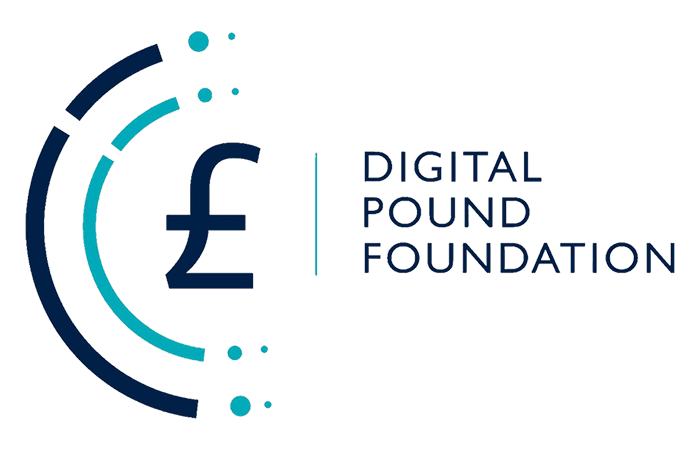Original Source: Global Government Fintech

Global Government Fintech Lab: Panel Session Five
The Global Government Fintech Lab 2022’s fifth panel session explored the public policy considerations behind the mounting interest in central bank digital currencies
Central bank digital currencies (CBDCs) are an increasingly prominent topic for government authorities worldwide.
The fifth (and final) session of the Global Government Fintech Lab 2022 – ‘How can CBDCs help deliver public good?’ – explored whether CBDCs can offer tangible public policy benefits or are a ‘solution in search of a problem’ (as some sceptical analyses, for example, a UK House of Lords report in January, have concluded).
The discussion, which focused on so-called retail CBDCs (one issued to the general public), featured Rainer Olt, head of the payment and settlement systems department at Estonia’s central bank, Eesti Pank; and Mehmet Kerse, senior consultant for digital finance and financial inclusion at World Bank-housed development policy and research centre CGAP (Consultative Group to Assist the Poor).
The session was held as 68 per cent of central banks consider themselves ‘likely to’ or ‘might possibly’ issue a retail CBDC in the short or medium term, according to a Bank for International Settlements paper published in May based on a survey of 81 central banks. CBDCs such as the Bahamas’ Sand Dollar and Nigeria’s eNaira are already live, while the US Federal Reserve, European Central Bank (ECB – for the eurozone) and Bank of England are all stepping up their interest.
Estonia is one of 19 countries that use the euro and Eesti Pank has undertaken research for the ECB investigating the suitability of the country’s core e-government technology for CBDC use (the findings were published last year). Olt’s current interest in CBDC includes “finding out where gaps can be filled” in the Single Euro Payments Area (SEPA – a European Union initiative to simplify euro-denominated bank transfers), he said. “For many years, we have strived to have a Single Euro Payments Area for cards, and there are market initiatives [that are] maybe not so successful yet,” he explained (a reference to the European Payments Initiative).
Kerse focuses on how CBDCs can help unbanked and underbanked people, as well as how they impact financial stability, commercial banks and other digital payments methods.
RELATED ARTICLE ‘Tallinn tales: an interview with Estonia’s payments leader’ – an in-depth interview (20 November 2020) with Rainer Olt about Eesti Pank’s CBDC research and digital payments more broadly
CBDC projects in the limelight

Asked to name CBDC projects they perceive as being particularly noteworthy from a public policy aspect, Olt mentioned the Eastern Caribbean Central Bank (ECCB)’s blockchain-based DCash, which became the first CBDC ‘live’ within a currency union more than a year ago (the ECCB is the monetary authority for eight islands).
“What I find interesting is that they [ECCB] are solving an issue because their payment system is not so developed – now they have a faster, better payment system,” Olt said. “But they have encountered an issue building on an external platform – they were offline for two months,” Olt continued – a reference to DCash suffering a service interruption triggered by a ‘technical issue and subsequent necessity for additional upgrades’ during the first quarter of 2022. He added that his understanding was that DCash user numbers were, to date, relatively small (120 merchants accepting DCash and about 4,000 people using it). “So, I think there are some lessons to be learned from these experiences,” he said.
Olt also mentioned China, where the People’s Bank of China (PBoC) is at an increasingly advanced stage of rolling out a digital yuan. “I like the solution they have built, and they actually have 260 million [digital] wallets opened,” he said. “But, looking at the details, there are only 47 cents within each wallet if you divide it [up]. So, in numbers of wallets it seems like a success, but in practical use probably there are also lessons to be learned, because if it’s something that solves a concrete market issue in the retail field, then the usage should be higher.”
He made a similar point in the Estonian context. “We have already instant payments – if you make central bank money instant, it doesn’t add value, so where is the added value?”, he asked.
Kerse named Sweden – where experimentation with an e-krona has been progressing in phases – as well as the Bahamas and Nigeria. The latter two projects were interesting, he said, because one of their main objectives is to advance financial inclusion and they are designing their CBDCs accordingly: for example, ‘tiered’ customer due diligence.
RELATED ARTICLE D€: unanswered questions (and quirks) amid Europe’s CBDC ‘nitty-gritty’ – our analysis (20 September 2021) of eurozone central banks’ digital currency explorations (including those of Eesti Pank) as the ECB readied the launch its digital euro investigation phase
CBDCs and the unbanked
Interest in CBDCs in advanced economies appears driven mainly by payments efficiency and financial stability considerations, with financial inclusion as a motivation to issue a CBDC typically given significantly greater prominence in developing countries.
But CBDC advocates in the developed world have pointed out that financial inclusion is a challenge everywhere. For example, five per cent of the adult population in Ireland (a eurozone country) do not have a bank account, ECB executive board member Fabio Panetta pointed out in a recent speech on CBDC (‘Public money for the digital era: towards a digital euro).
Asked to what extent he saw a eurozone CBDC helping with financial inclusion, Olt pointed out that an EU directive on payment accounts gives people the right to a basic payment account regardless of their place of residence or financial situation.
“There might be different issues why people cannot open [bank] accounts,” he said, going on to question whether a CBDC (at least in a ‘two-tier’ system where commercial banks act as CBDC distributors) would necessarily trigger more people to actually open accounts.
“What is the difference, at the end of the day? If [people] do not open a bank account currently, why should they then [with a CBDC] because they [banks] will still have all the obligations to do know-your-customer [KYC] and take the risk?” Olt asked.
RELATED ARTICLE ‘Digital pound would help tackle financial exclusion, say CBDC proponents’ – our write-up (25 May 2021) of a webinar convened by the Digital Pound Foundation in the UK
CBDCs in the developing world

Kerse was asked about the opportunities and challenges with CBDC as a financial inclusion tool in the developing world.
“Definitely, especially in developing countries, CBDC has potential to advance financial inclusion,” he said, before pointing out that CBDCs’ technical design is critical to ensure that people without smartphones or reliable internet connections are able to participate.
“Especially in developing countries, there’s already a ‘digital divide’ between genders,” he told the audience. “So if the central bank designs CBDC that can only be accessed with a smartphone, with a reliable internet connection, then it cannot be accessed by [as many] women [as men] and it worsens the digital divide,” he added. He went on to recommend that CBDC architects, particularly those in developing countries, ensure that a CBDC can be also accessed by ‘feature (basic) mobile-phones’ and that there “should be some kind offline functionality of retail CBDC in these countries, so that if people do not have a reliable internet connection or do not have reliable electricity, they can access the CBDC easily and they can make transactions”.
China’s progress was again highlighted here, with Kerse saying that the country was piloting a debit card-style CBDC card showing the account balance. “This could be helpful for financially excluded people,” he added.
RELATED ARTICLE ‘CBDCs’ financial inclusion potential examined in World Bank/BIS paper’ – our news story (20 April 2022) on a paper, ‘Central bank digital currencies: a new tool in the financial inclusion toolkit?’, by staff from the World Bank and BIS
CBDCs: complex and not to be hurried?
Discussion moved on to the broader political rationale behind CBDCs, with Olt highlighting the relevance to the current “geopolitical context” of the ‘Report on a digital euro’ published by the ECB in October 2020.
He mentioned, for example, the euro’s international role. “You have to be prepared for the risks that may come from other CBDCs or cryptocurrencies, so we [the eurozone] are prepared,” he said.
He then re-stated his earlier point about “the missing pillar of the SEPA area – that we [Europe] don’t have any European card payment scheme or solution”. He explained: “Maybe this is something that can address this political issue [in] that we have an objective but the market has not delivered yet and is struggling.”
He also referred to CBDC as a “back-up solution – the resilience aspect”, describing this as a ‘key topic’. “Considering how dependent we are on being online, a solution that could facilitate offline payments – between maybe even devices – that would be something,” he continued. “The question is [whether] we are in a position to look into, and maybe put some money, where the private sector is not yet willing.”
Olt also made a two design-focused points, saying that a CBDC needs to be tip-top from a user perspective – and should be created with emerging technologies in mind, such as industry 4.0 and the Internet of Things, that “maybe the market is not yet willing to put money in to support”. He referenced Eesti Pank’s examination of the appropriateness of the KSI Blockchain for supporting a potential digital euro (Eesti Pank concluded positively that ‘this technology does not set any essential limits on the size of the money supply’ and ‘is able to handle the entire supply of euros in circulation and more’).
But, technology-wise, CBDCs are overall a “complex issue” and should not be “hurried”, Olt said. Referring to the DCash outage, he asked rhetorically: “Just imagine if your payment systems were to fail for two months, what would you do?”.
RELATED ARTICLE ‘DCash resumes service with government to consumer payments on agenda’ – our news story (7 March 2022) on DCash’s return to circulation after ‘several upgrades’ to its platform (click here for further DCash coverage)
AML checks and data privacy
Further concerns relate to anti-money laundering (AML) controls – a topic raised via a question from an audience member.
China was again introduced as an example, with Kerse describing how the country’s CBDC has four operational tiers with progressively tighter AML checks.
But there are concerns over state authorities’ access to citizens’ CBDC data – and, of course, not just in China. The topic of data privacy ranked as top priority in an ECB public consultation on the digital euro (whose results were published in January 2021). “In many countries people are concerned about privacy,” Kerse pointed out. “They don’t want the central bank to see their data, their personal information.”
One way forward is for ‘intermediaries’ (private banks) to on-board customers and handle AML/CFT (combatting the financing of terrorism) duties.
“In principle, the obligation to do the checks will be on the intermediaries,” Olt said. “The question is whether there are options to make it more efficient.”
Olt again referred to Estonian state authorities’ use of blockchain. “Each individual Estonian knows if somebody accesses his or her data online. So, we have it [data] distributed in different databases. All these things are technologically possible. It doesn’t have to be a ‘super-database’ – nobody wants to create something like that, it is too expensive and too prone to attacks,” he said.
Nonetheless, privacy is an important consideration when it comes to public policy and CBDCs. “It is just [about] confidence,” said Olt. “In some countries you would look at the government and think whether they would look into the data. Some other governments [would] ensure that everything is transparent and you would get notice when somebody accesses your data who doesn’t have to do so.”
Momentum but no foregone conclusion

Given the momentum behind CBDCs, the session concluded with the panellists asked whether they think CBDCs’ introduction is a foregone conclusion.
“My short answer is ‘no’,” Kerse responded. “It really depends on which country you’re in, and central banks want to closely look at CBDC design issues. After this exploration, they will decide on what they will do.”
There are, of course, also legal considerations – with Olt pointing out that any decision to introduce a CBDC requires not only political will but also a legal foundation. “It’s not for the central bank only to decide,” he said.
BIS’s recent survey found that the share of central banks with a legal authority to issue a CBDC had increased from 18 per cent to 26 per cent year-on-year (Jamaica has just done so); and, in addition, about 10 per cent of jurisdictions are currently changing their laws. But, at present, one quarter of central banks lack the required legal foundation and about 40 are ‘unsure’.
“In Europe, we cannot do it without changing the law. So, I cannot say ‘yes’ or ‘no’ at this point in time,” said Olt, answering specifically in the context of the eurozone.
As BIS’s data shows, it will be a while yet before many governments get into the weeds of the legalities, however, and overall, the session provided a snapshot of the breadth of fintech-related areas that policymakers looking into digital currencies need to consider; how public policy matters intermesh with technical questions; and the range of priorities that different parts of the world have when exploring the possibilities.
WATCH
Watch the session, which was held on 1 June 2022, in full (46min 36sec) =>
























































